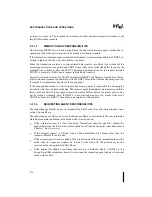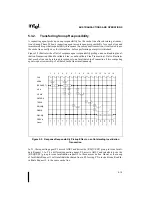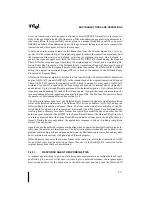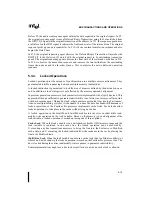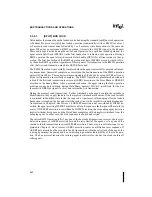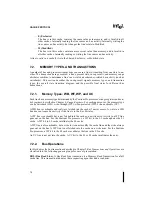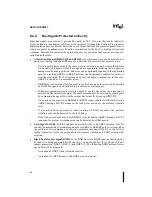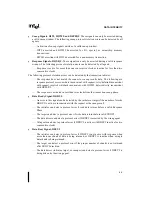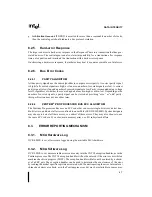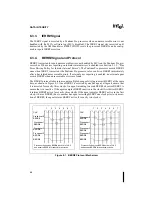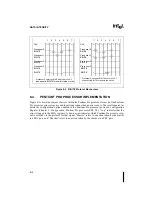
7-1
CHAPTER 7
CACHE PROTOCOL
The Pentium Pro processor and Pentium Pro processor bus support a high performance cache
hierarchy with complete support for cache coherency. The cache protocol supports multiple
caching agents (processors) executing concurrently, writeback caching, and multiple levels of
cache.
The cache protocol’s goals include performance and coherency. Performance is enhanced by
multiprocessor support, support for multiple cache levels, and writeback caching support. Co-
herency (or data consistency) guarantees that a system with multiple levels of cache and memory
and multiple active agents presents a shared memory model in which no agent ever reads stale
data and actions can be serialized as needed.
A line is the unit of caching. In the Pentium Pro processor, a line is 32 bytes of data or instruc-
tions, aligned on a 32-byte boundary in the physical address space. A line can be identified by
physical address bits A[35:5].
The cache protocol associates states with lines and defines rules governing state transitions.
States and state transitions depend on both Pentium Pro processor-generated activities and ac-
tivities by other bus agents (including other Pentium Pro processors).
7.1.
LINE STATES
Each line has a state in each cache. There are four line states, M (Modified), E (Exclusive),
S (Shared), and I (Invalid). The Pentium Pro processor cache protocol belongs to a family of
cache protocols called MESI protocols, named after the four line states. A line can have different
states in different agents, though the possible combinations are constrained by the protocol. For
example, a line can be Invalid in cache A and Shared in cache B.
A memory access (read or write) to a line in a cache can have different consequences depending
on whether it is an internal access, by the Pentium Pro processor or another bus agent containing
a cache, or an external access, by another Pentium Pro processor or some other bus agent.
The four states are defined as follows:
— I (Invalid)
The line is not available in this cache. An internal access to this line misses the cache
and can cause the Pentium Pro processor to fetch the line into the cache from the bus
(from memory or from another cache).
— S (Shared)
The line is in this cache, contains the same value as in memory, and can have the
Shared state in other caches. Internally reading the line causes no bus activity.
Internally writing the line causes a Write Invalidate Line transaction to gain ownership
of the line.
Summary of Contents for Pentium Pro Family
Page 17: ...1 Component Introduction ...
Page 26: ...2 Pentium Pro Processor Architecture Overview ...
Page 27: ......
Page 36: ...3 Bus Overview ...
Page 62: ...4 Bus Protocol ...
Page 105: ...5 Bus Transactions and Operations ...
Page 126: ...6 Range Registers ...
Page 131: ...7 Cache Protocol ...
Page 135: ...8 Data Integrity ...
Page 148: ...9 Configuration ...
Page 161: ...10 Pentium Pro Processor Test Access Port TAP ...
Page 172: ...11 Electrical Specifications ...
Page 201: ...12 GTL Interface Specification ...
Page 229: ...13 3 3V Tolerant Signal Quality Specifications ...
Page 233: ...14 Thermal Specifications ...
Page 239: ...15 Mechanical Specifications ...
Page 241: ...15 2 MECHANICAL SPECIFICATIONS s Figure 15 1 Package Dimensions Bottom View ...
Page 252: ...16 Tools ...
Page 260: ...16 8 TOOLS Figure 16 4 Generic MP System Layout for Debug Port Connection ...
Page 264: ...17 OverDrive Processor Socket Specification ...
Page 290: ...A Signals Reference ...
Page 320: ...Index ...
Page 328: ......


